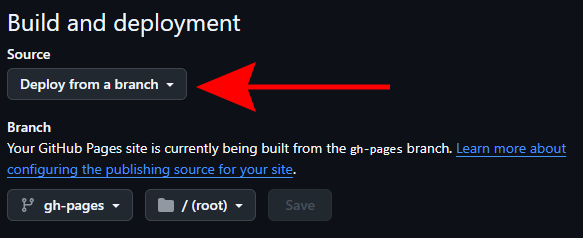Hello World 👋
Learning to use Zola and setting up my blog
Published: March 17, 2025

Hello 👋! As a computer enthusiast, I enjoy exploring new ways to learn about programming, design, and engineering.
I used to have a simple Linktree-style website, but I wanted something more, a place to document my projects and share what I'm learning
In this post, I'll walk you through my process of setting up this blog, covering my choice of tools (Zola and Pico CSS), and how I'm hosting it on GitHub Pages.
Why I chose Zola
I finally decided to expand my online presence with a blog. Static Site Generators (SSGs) build websites mostly in advance, making them ideal for blogs. Instead of generating pages on each visit, the site is built once and the files are uploaded. This results in faster, more secure, and easier to host websites.
I wanted an SSG that:
- Didn't require me to install an environment to use (so no Python, Node.js, etc)
- Is a single binary if possible
- Easy to build my own templates
This ruled out popular options like Gatsby, Astro, Jekyll, and Pelican, narrowing my choice to Hugo and Zola.
Hugo is the more popular of the two. I fiddled around with it for a bit, but I found the Go templating engine a bit less intuitive to what I was used to using.
Zola just clicked better for me. It uses a templating engine called Tera.
Using Zola is straightforward: just visit GetZola.org and follow the instructions. It's similar to Jinja2, a templating engine I'm familiar with from Flask projects. Zola uses Tera, which uses curly brackets and percent signs, a familiar approach for those used to Jinja2.
Pico CSS for Styling
I've been exploring lightweight CSS frameworks for my projects. Lightweight CSS frameworks simplify styling by providing a customizable base of styles, saving time and effort.
Some of my favorites are:
For this blog, I chose Pico CSS. I hadn't used it in a project yet, and it's one of the most popular lightweight frameworks out there. I had used MPV.css recently and liked it, but its default styles felt too rigid for this project. The default styles in Simple.css weren't really jibing with me for this project either. Pico CSS's clean default styles and ease of customization made it a good choice. Plus, with Pico, changing the color of buttons is as simple as tweaking one line of CSS.
Pico CSS can be implemented by downloading the file or using their CDN. PicoCSS.com provides instructions.
Hosting on Github Pages
I had been hosting my Linktree-style personal site on GitHub Pages, so I stuck with that. It's free, easy to use, and especially convenient if you've already using GitHub. A nice perk is that GitHub Actions can be used to build and deploy the site on a git push. There are example GitHub Actions that can be found on GitHub.
This is an example of what it looks like for Zola v0.20.0 when I wrote this article:
name: Zola on GitHub Pages
on:
push:
branches:
- main # Trigger on pushes to the main branch (rename to master if that is what your main branch is called)
jobs:
build:
name: Publish site
runs-on: ubuntu-latest
steps:
- name: Checkout main
uses: actions/checkout@v4 # check out the repository code
- name: Build and deploy
uses: shalzz/zola-deploy-action@v0.20.0 # Uses Zola v0.20.0 to build the site
env:
GITHUB_TOKEN: ${{ secrets.GITHUB_TOKEN }} # This token is automatically provided by GitHub for deployment
Just add this to a YAML file in the .github/workflows folder. I called my file zola-build.yml.
Then set your Github Pages settings to deploy from a branch and set that branch to gh-pages and the root folder. I couldn't get it to build directly to a folder on the main branch, but GitHub Pages allows you to place your static website files in a gh-pages branch to make them publicly accessible.

After pushing your files to GitHub, the action should create a gh-pages branch, making your site public.
Conclusion
Setting up this blog with Zola and Pico CSS has been smooth and rewarding. If you're exploring SSGs or lightweight CSS frameworks, I hope this helps!